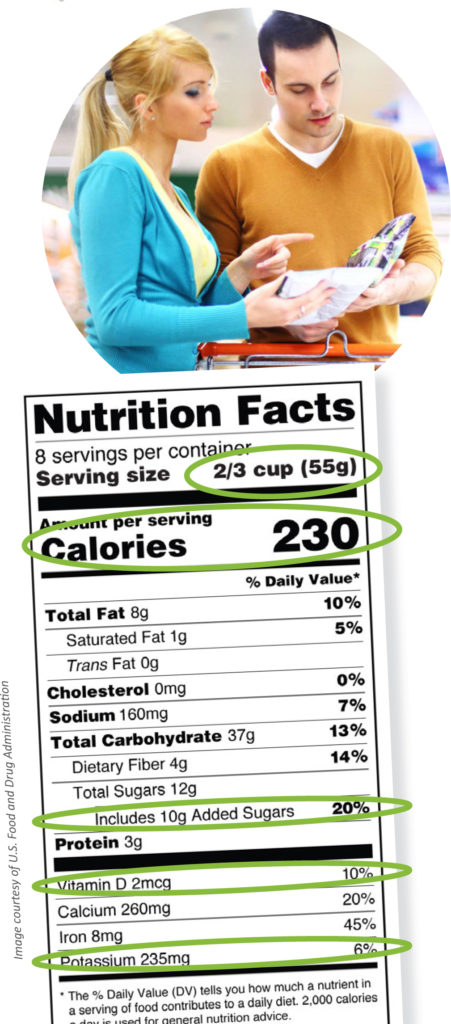
Are You Ready?
In early 2016, the U.S. Food and Drug Administration (FDA) announced it was revamping the Nutrition Facts label—the nutrition information panel required on nearly all packaged foods in the U.S. Based on the latest nutrition science, the FDA is requiring manufacturers to change the way certain nutrition details are presented, including updating serving sizes to reflect what people actually eat in a typical serving, calling out the amount of added sugars in products, changing small packages to list both the nutrition for a single serving and the full package, and more.
“This is a significant issue for the industry,” says Jim McIntyre, Director of Production for Daymon. “There are new nutrients, vitamins and minerals brands have to list, which means suppliers have to work with food scientists to dissect their formulations. Plus, the new design of the label means things like calories are now screaming out at you. That can be a concern for today’s more health conscious consumers.”
Fortunately, the experts at Daymon are ready to help retailers and brands navigate these challenges to ensure their product packaging is not only in compliance with the new standards by the July 2018 deadline, but also that it (still) appeals to consumers. “We’ve established a team that’s been fully educated on the new regulations and what it means for suppliers and brands. We’re ready to help them not only update existing Nutrition Facts labels, but also consider what other changes may be needed on packages,” says McIntyre.
He explains that the new labeling requirements may affect other elements of the package design. For example, with serving size references changing, a product that was previously called out as “an excellent source of calcium” on the front of the package may no longer qualify for that regulated claim. The requirement for dual column labels (showing both single serving and full package nutrition information) can also impact the design, since it takes up a larger amount of space.
“This would be a good time to consider a bigger redesign of the packaging, which the team at Galileo is also ready to help with,” says McIntyre. “There’s a cost-savings in doing both a package redesign and the label update together—absorbing the mechanical costs and prepress fees all at the same time.”
A redesign (if not a reformulation) may be particularly beneficial if a product appears less desirable after the Nutrition Facts label changes. According to McIntyre, “brands can use a package redesign to educate and inform the consumer to keep a positive perception of their product. For example, maybe a product isn’t the healthiest in terms of calories or sugar, but it may be associated with good feelings or childhood memories or the holidays. Or perhaps there’s another health claim to call out, such as gluten-free, organic or no artificial flavors. This is something we can help brands with—coming up with a plan to position their product and visualizing the solution that’s going to resonate with their target audience.”
McIntyre says that the first half of this year is a critical time for retailers and brands to hit the ground running to develop a plan of action and clear understanding of what needs to be done. “This process can often turn out to be more complicated than expected. Retailers and brands must be in close communication with their suppliers and whoever is managing the inventory to ensure as things are running out of stock, they’re able to replenish them and make the necessary package changes at the same time. There are lead times that need to be met. If everyone waits until June or July, they’ll be pushing it. It would be very difficult to get a large number of SKUs updated in less than a year.”
To learn more about how Daymon can help you meet the requirements of the new Nutrition Facts label regulations, contact Jim McIntyre at jmcintyre@daymon.com.

